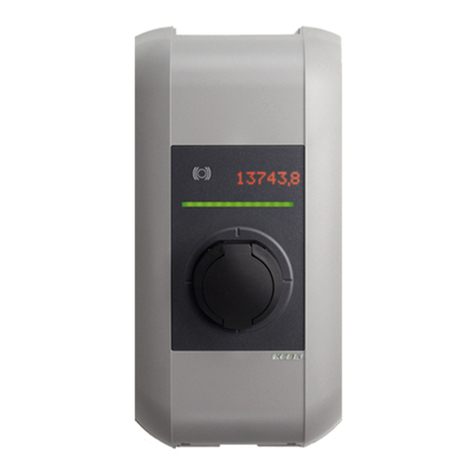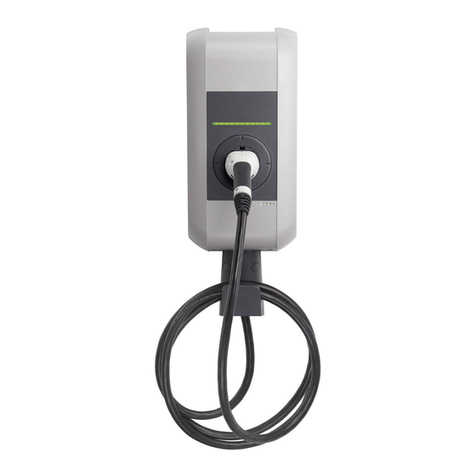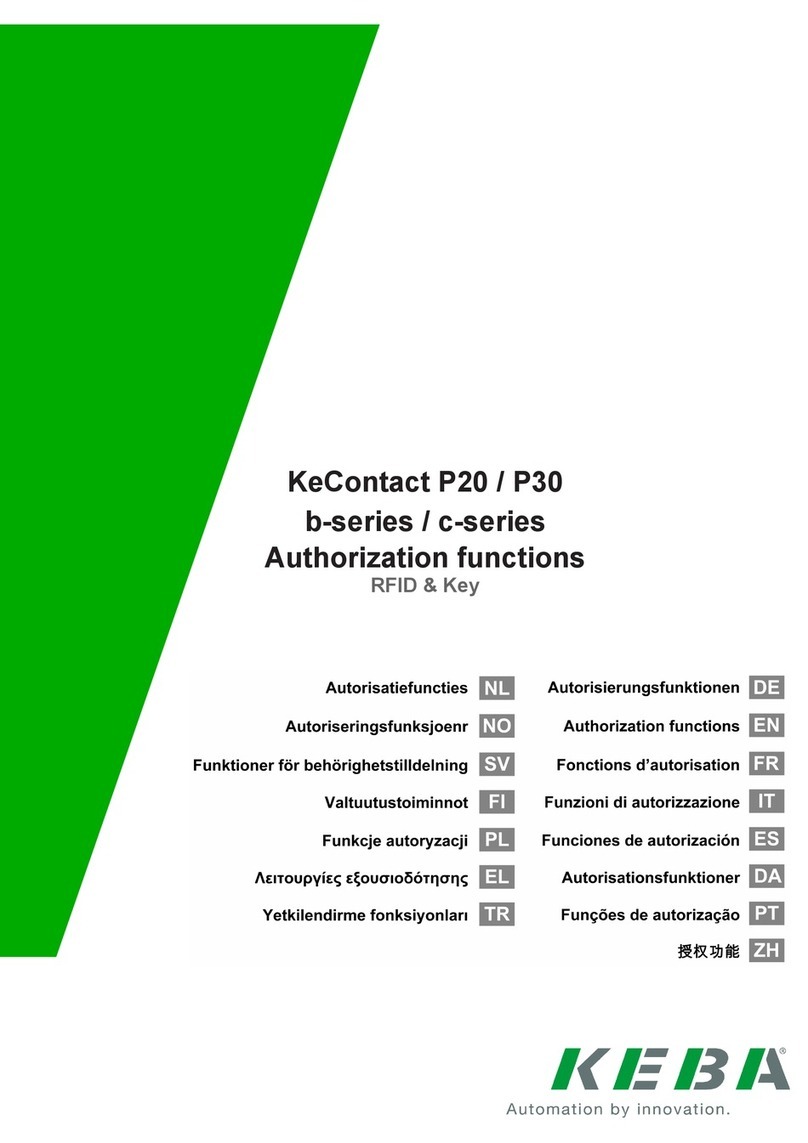
DE
Floor-mounted column – Installation Manual, v4.00, 90333 5
Standsäule – Installationsanleitung
Sicherheitshinweise
!
WARNUNG!
Nichtbeachtung der Sicherheitshinweise kann zu Lebensgefahr, Verletzungen und
Schäden am Gerät führen! Der Hersteller lehnt jede Haftung für daraus resultieren-
de Ansprüche ab!
Elektrische Gefahr!
Die Montage, erste Inbetriebnahme und Wartung der Ladestation darf nur von
einer einschlägig ausgebildeten, qualifizierten und befugten Elektrofachkraft
durchgeführt werden, die dabei für die Beachtung der bestehenden Normen
und Installationsvorschriften verantwortlich ist.
Halten Sie die angeführten Vorgaben für die Standortauswahl und die bauli-
chen Voraussetzungen ein!
Abweichungen zu den Standortvorgaben können zu Tod, schweren Körperver-
letzungen oder Sachschäden führen, wenn die entsprechenden Vorsichtsmaß-
nahmen nicht getroffen werden!
Gebrauch dieses Handbuchs
Dieses Installationshandbuch wendet sich ausschließlich an qualifiziertes Personal1.
Diese Anleitung ist eine Ergänzung zum „Installationshandbuch“ der Ladestation. Alle im
Handbuch enthaltenen Hinweise und Anweisungen zu Standortauswahl, Montage und zum
Anschluss der Ladestation müssen beachtet werden!
Bestimmungsgemäßer Gebrauch
Alternativ zur Montage der Ladestation auf einer Wand, steht eine Standsäule zur freiste-
henden Montage im Innen- oder Außenbereich zur Verfügung.
Je nach Ausführung und Anzahl der Ladestationen muss eine unterschiedliche Anzahl von
Anschlusskabeln und Leerrohren im Betonfundament berücksichtigt werden.
Wird die Ladestation mit einer steckbaren Versorgungsleitung installiert (z.B. für Demonstra-
tionszwecke), ist für die Versorgungsleitung eine ausreichende Zugentlastung sowie ein Kan-
tenschutz vorzusehen.
Für die Montage der Standsäule sind die jeweiligen nationalen Vorschriften zu beachten.
Gewicht (ohne Ladestation): 15,0 kg (V1/V2)
19,2 kg (V3)
1Personen die aufgrund fachlicher Ausbildung, Kenntnis und Erfahrung sowie Kenntnis der einschlägigen Nor-
men, die übertragenen Arbeiten beurteilen und mögliche Gefahren erkennen können.
































